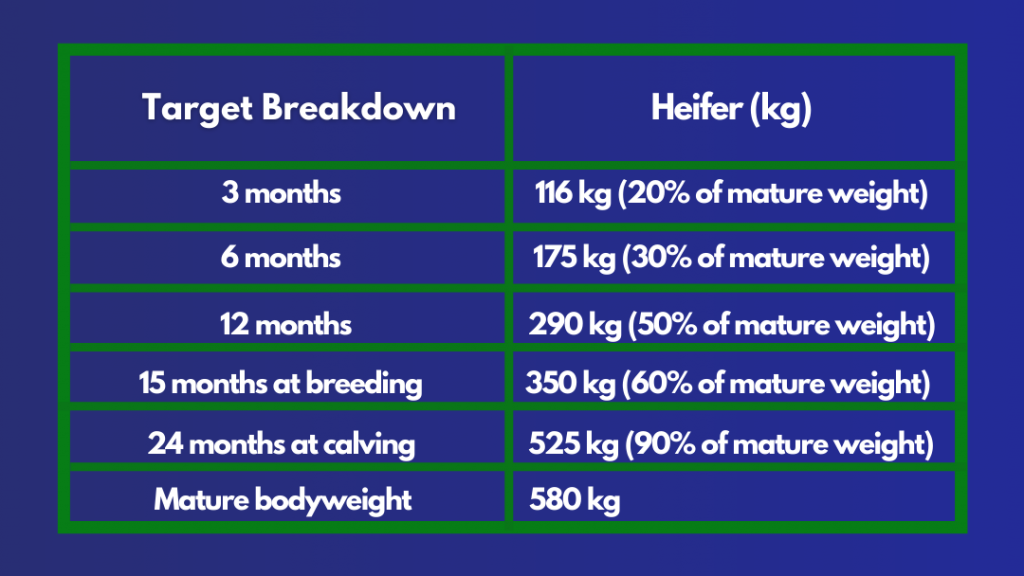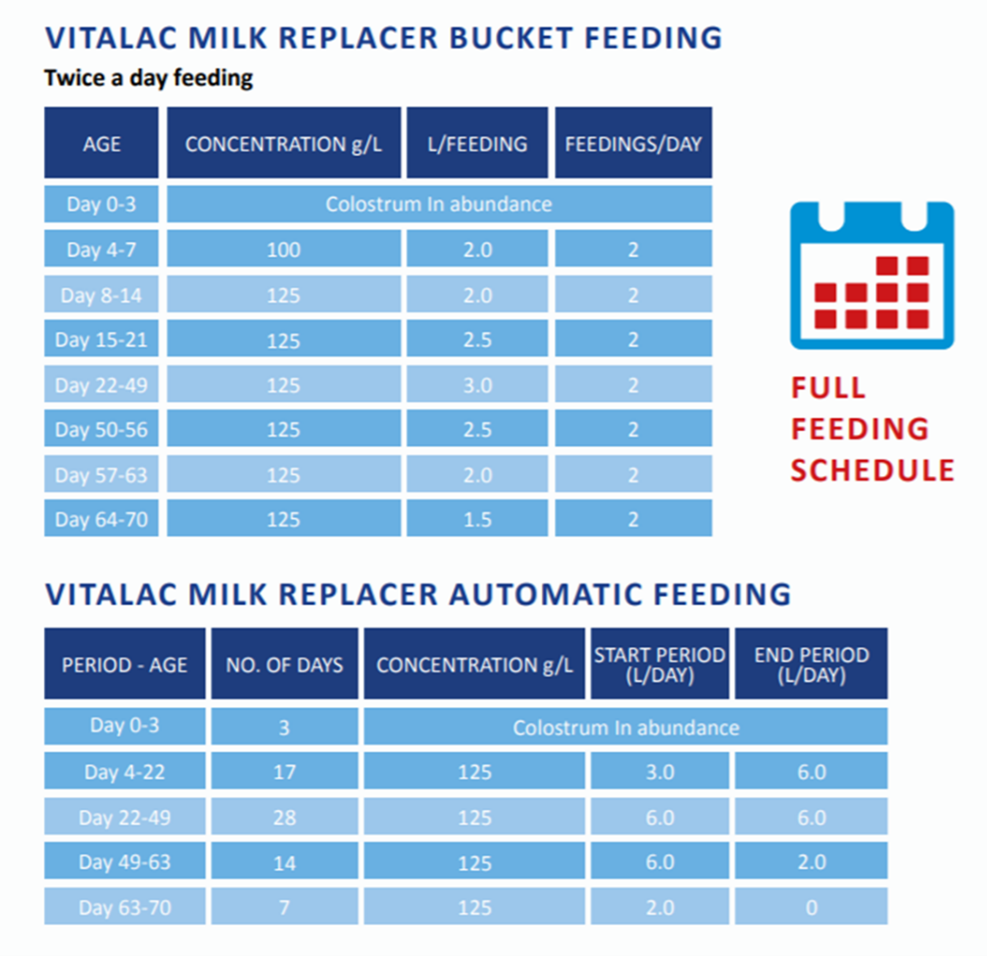The ultimate goal of calf rearing is to set up a heifer to achieve target weights over her lifetime in order to maximise profitability. These targets will include doubling her birthweight at the point of weaning, achieving 60% of her mature weight at breeding, and calving down at 24 months at 90% of her mature body weight.
To reach such targets, replacement heifers need to achieve a steady gain of approximately 0.75 kg/day from birth. Interruptions to performance over the calf-rearing period may offset such target weights being achieved. Therefore, adopting best practice calf rearing advice and protocols are of key importance over the next few vital weeks.

3-2-1 Rule
Good colostrum management is the most important factor in calf health and survival. Over the last 3-5 years, 70% of calves that presented for a post-mortem at regional veterinary laboratories, were found to have received either poor quality or insufficient quantities of colostrum.
When feeding colostrum, it is essential that the 3-2-1 rule is adhered to. This includes providing the calf with at a minimum of 3 litres (or 5-6% of a calf’s birth weight), within 2 hours of birth, using colostrum from the cows first milking. This process should then be repeated 8 hours later, however it is important to note that by the second milking, the dam’s immunoglobulin content will have halved.
Cleanliness of colostrum is a huge dictating factor, as the amount of dirt particles or contamination to the colostrum before entering the calf will limit the amount of immunity absorption available. Feeding pooled colostrum to calves is also not recommended as it can lead to major risk factors including increased disease risk and poor-quality colostrum entering the pool.
With this in mind, it is essential to ensure that all utensils are sterile and that milking protocols and good colostrum harvesting hygiene are applied.
Calf Hygiene and Facilities
Facilities ideally should be clean, dry, draught free, with good ventilation. A new-born calf will spend over 80% of their time lying down, therefore it is imperative to provide a deep, warm, dry bed always.
Calves should spend minimal time periods in the calving-pen to avoid picking up infection or disease. To avoid carrying disease into the calf shed over the peak calving months, set-up a wash point at the entrance to the calf shed for staff, vets, etc. Early detection of sick calves and isolation to avoid spreading bacterial infections, is also of high importance.
Rumen Development
Once a calf starts to intake water and starter concentrates/ration, we introduce healthy bacteria into the rumen which will kick-start rumen development. Starter concentrates and ad-lib fresh water should be available to the calf from three days of age. A clean source of long roughage/fibre (e.g. straw) should also be available at all times to promote dry matter intakes This forage should be offered above ground level in racks/mangers.
Weaning should only ever be considered once calves are consuming 1.5 kg of concentrates/day. Weaning calves on a weight basis, compared to an age basis, will result in a more uniform batch.
Milk Replacer Choice
When it comes to milk replacer, the three main benefits include:
- Cost effectiveness
- Reduced risk of disease transfer in the herd
- Consistency in the calf’s diet
Milk replacer should be dairy derived and contain a high dairy content. Dairy proteins are more easily digestible and available to the calf compared to plant-based proteins. Both Vitalac Red and Blue Calf Milk Replacers contain a 90-95% dairy content.
Milk replacer should replicate the role of good quality whole milk, typically offered at 12.5% milk solids (E.g. 125 g powder, into 875ml clean water to make 1 litre of milk). Feeding a calf twice-a-day at 6 litres/day would result in offering the calf 750 g of powder/day.
When mixing, adhere to the milk replacer guidelines outlined below using fresh clean, warm water and sterile mixing and feeding utensils. The optimal drinking temperature of the calf milk replacer is 39°C. To prepare the milk, dissolve the powder in two-thirds of the amount of water at 55-60°C and add the remaining water at room temperature until the optimum drinking temperature is reached.
See typical milk replacer feeding guidelines below:


More Information:
For more information, browse our Vitalac Calf Milk Replacer page or download the Agritech-Milk-Replacer-Brochure (2.5MB).


